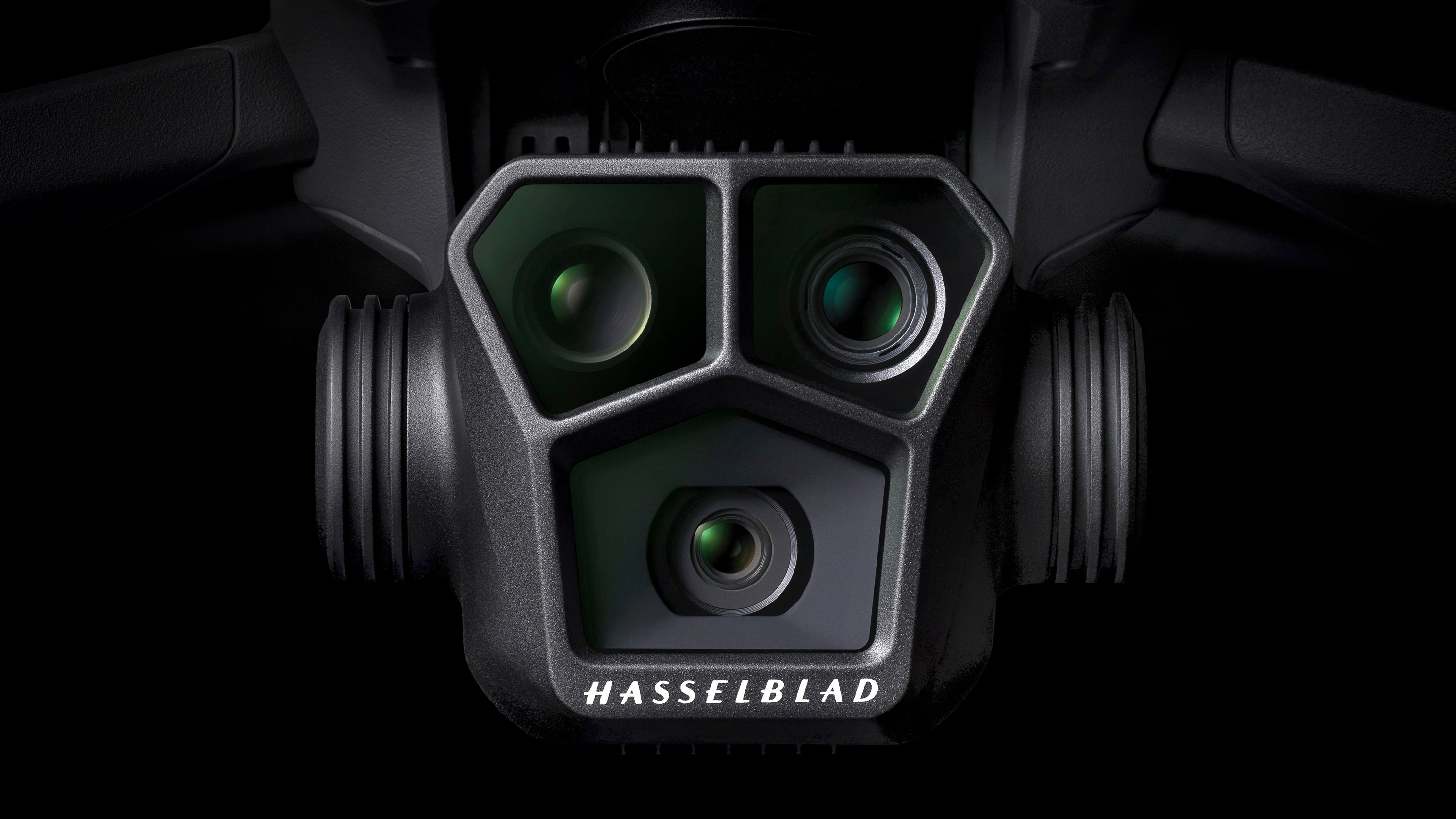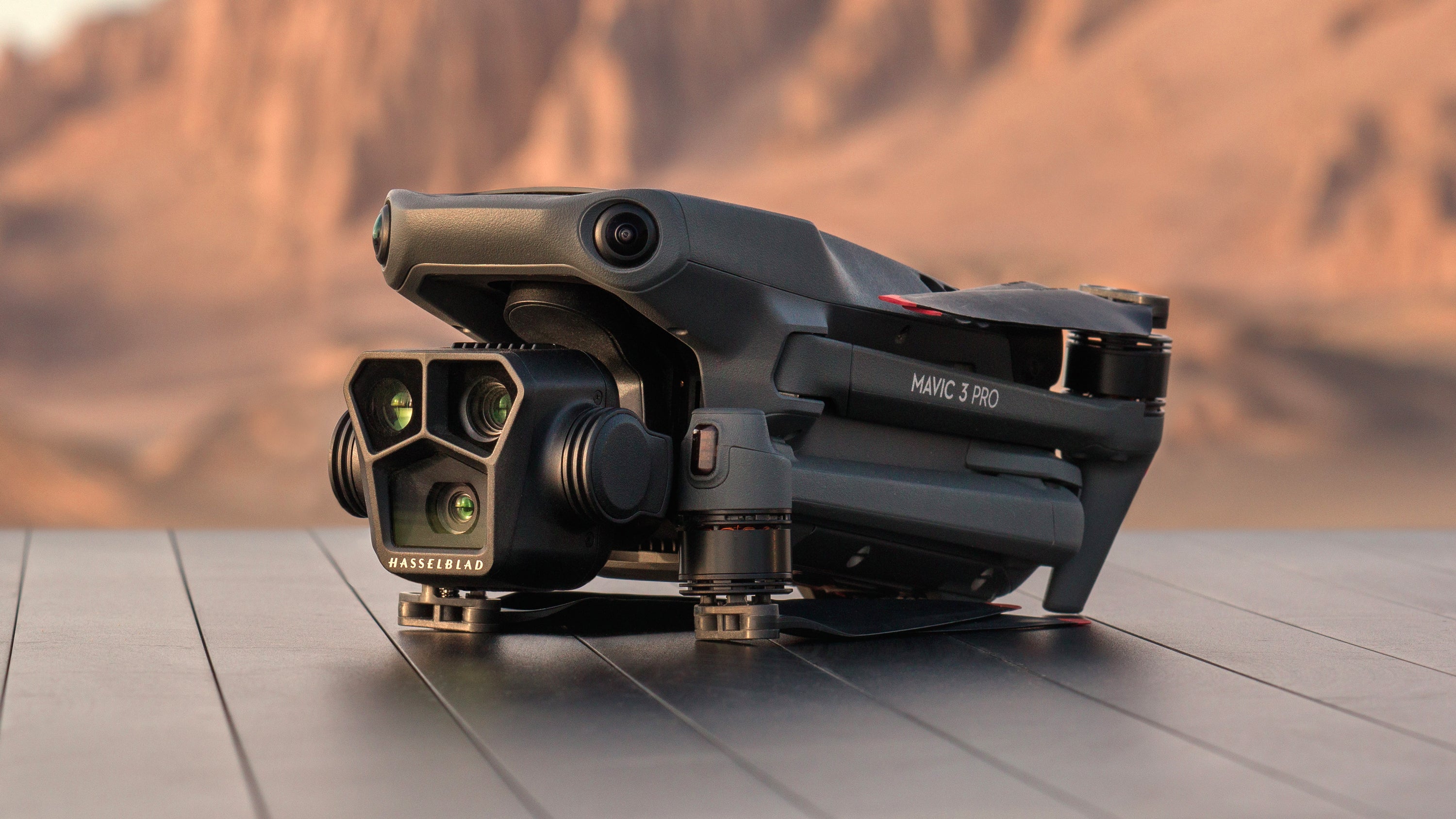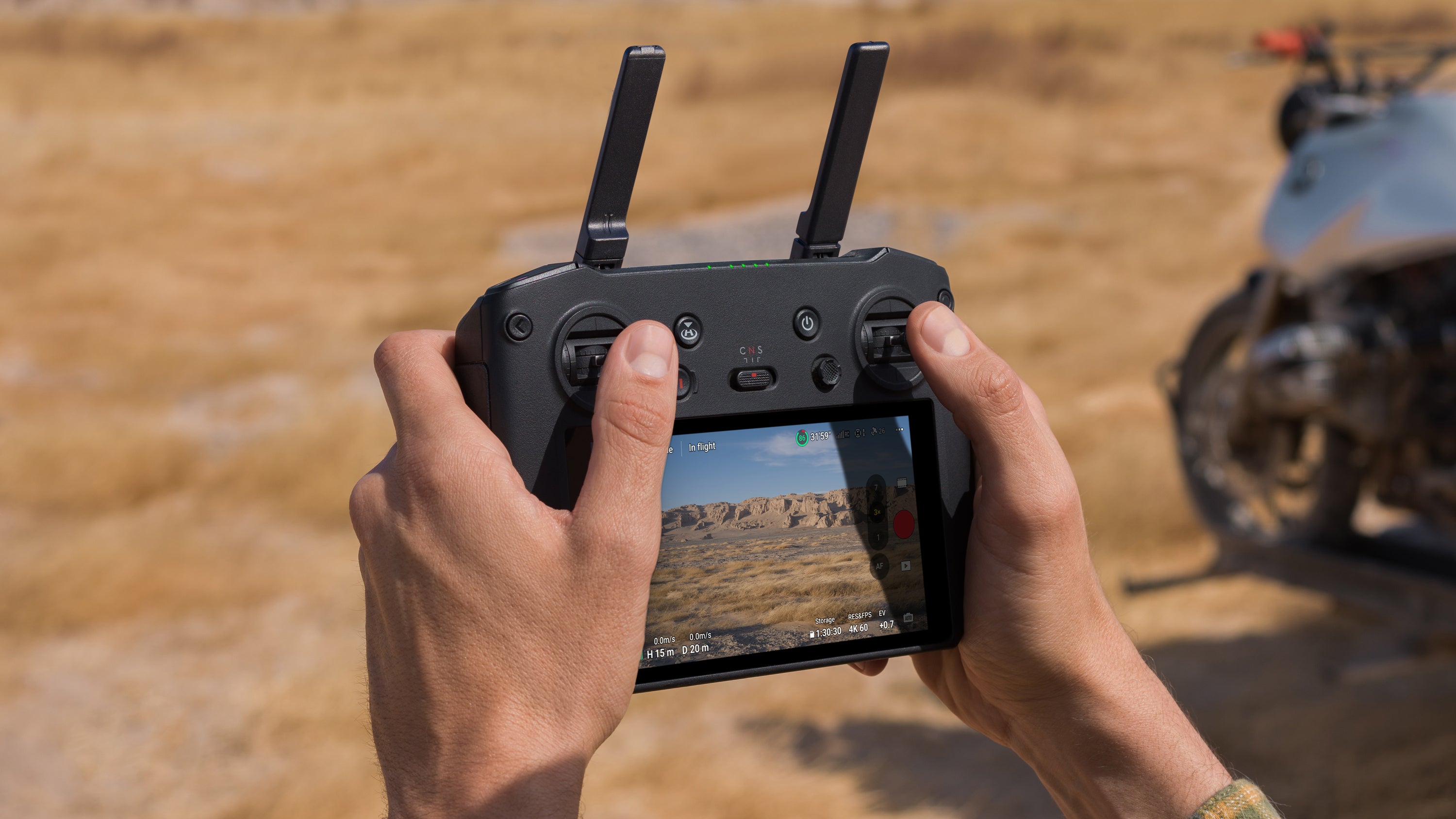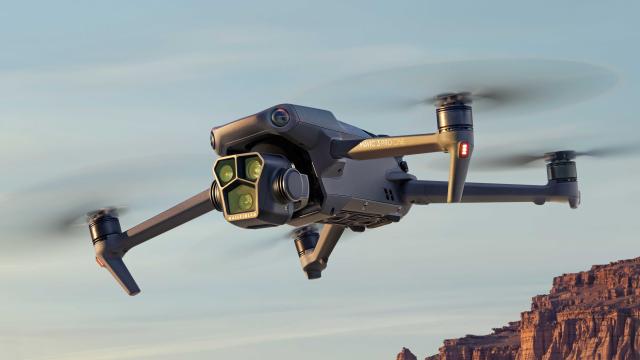Originally debuting back in late 2021, the DJI Mavic 3 got a new lease on life a year later with the cheaper Mavic 3 Classic, though it sacrificed one of its dual cameras for the price cut. With the new Mavic 3 Pro, DJI is going the other way by upgrading the Mavic 3 drone with a third camera, offering more creative freedom for framing shots from the air.
The Mavic 3 Pro carries forward the same 4/3 CMOS Hasselblad camera used in the other Mavic 3 models, with a 24-millimetre equivalent prime lens (it doesn’t zoom) for capturing the dramatic wide-angle vistas that drone videography has come to be known for. It also carries over the same video specs as the original Mavic 3, capturing 5.1K footage at 50fps, or 4K at 120fps.

Also returning to the Mavic 3 Pro is the 28x hybrid zoom (or 7x zoom optically) camera from the original that was removed for the cheaper Mavic 3 Classic, but with a lens upgraded from 162mm to 166mm, and an aperture increase from f4.4 to f3.4, allowing pilots to get much closer to a subject while keeping the drone, its spinning propellors, and the noise they produce, farther away.
The 166mm telephoto camera is now joined by an additional 70mm medium telephoto camera on the Mavic 3 Pro, with a 1/1.3-inch CMOS sensor and 3x optical zoom. Both offer more creative flexibility when it comes to framing, but they’re also limited to capturing 4K video at 60fps, instead of 120fps, so there are some trade-offs.

With an extra camera comes extra weight, which means the Mavic 3 Pro sees a small hit in flight time: 43 minutes in optimal conditions instead of 46 minutes with the original and Classic models. But it still includes “eight wide-angle vision sensors” to recognise potentially problematic obstacles and automatically fly around them, as well as the DJI O3+ transmission system allowing the drone to be flown from up to 15km away while still providing the remote pilot with a 1080P/60fps live video stream on their controller, or in their goggles.
The Mavic 3 Pro also carries forward all of the automated functionality of the two previous models, including subject tracking for automatic focus and framing, the ability to follow custom pre-programmed waypoints and precisely recreate a flight route again and again, and “Advanced RTH” allowing the drone to plan an efficient but safe flight back to its starting point when its battery starts to get low.

Officially shipping in May, the DJI Mavic 3 Pro starts at $3,099 for a basic kit that includes the DJI remote control and a battery, or $4,199 for the Fly More Combo kit which includes additional batteries, a multi-charger, a set of custom ND filters, and extra props.

If you want to step up to the newer DJI RC Pro controller featuring a brighter screen that’s easier to see when used outdoors in sunlight, it’s bundled with the Mavic 3 Pro as part of a pricier $5,329 combo. Finally, DJI is also offering a Cine version of the DJI Mavic 3 Pro for $6,939: a significant price increase, but it also includes support for Apple’s ProRes 422 HQ, ProRes 422, and ProRes 422 LT codecs on all three cameras for improved video quality. Last but not least, it has a 1TB SSD drive built right into the drone with a high-speed 10Gbps cable connection for quickly pulling media off the drone.
